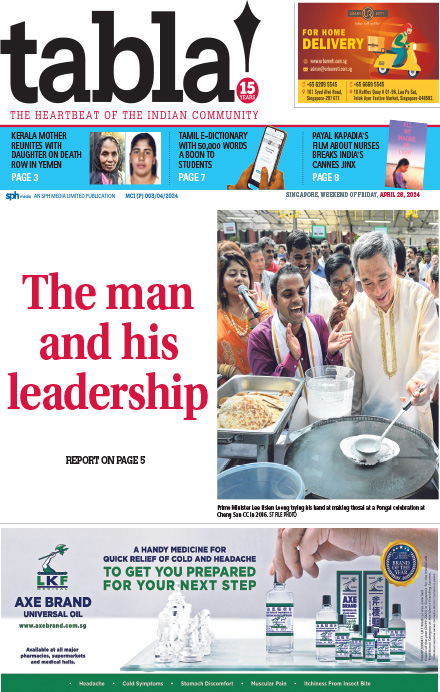ASAD LATIF
One of the fundamental successes of Singapore lies in the fact that multicultural relations here are based on integration and not assimilation.
Integration requires no more than collective loyalty to a national centre that is not defined by a single race or religion. Assimilation demands no less than minorities subsuming their cultural identities under a majoritarian centre controlled by a particular race or religion (or both).
Singapore's model of integration is manifest in the degree of comfort that it generates not only among communities but within them.
Just as Malays, Indians and Eurasians do not have to measure their Singaporeanness by their cultural closeness to the majority Chinese, minorities within, say, Indians similarly do not have to define their Indianness by their affiliation with Tamils, who make up the majority of Indians here.
This happy state of affairs attests to the natural acceptance of diversity by Tamils, whose historical contribution to the evolution of a national identity in India is as extensive as that of any other Indian. Tamils have no need to be on the cultural defensive in India, and that confidence radiates throughout the global Tamil diaspora.
The "Tamil mood" of passing times is captured definitively in a massive, two-volume study, Sojourners To Settlers: Tamils In Southeast Asia And Singapore.
Edited by Mr Arun Mahizhnan and Ms Nalini Gopal, the essays in the 2019 publication locate the sources of contemporary Tamil self-confidence in the community's ability to preserve an identity which, while it is rooted in ancestral India, has blossomed in the inclusive habitat of South-east Asia in general and Singapore in particular.
Here, Tamil self-confidence is supplemented by the larger tolerance of ethnic diversity promoted by the state.
Of course, there is friendly intracultural jousting among Tamils, Malayalees, Telugus, Punjabis, Sindhis, Gujaratis, Bengalis and others, but the ring is held in place by intercultural rules laid down by the Singapore state.
It is the consolidation of a multicultural statehood that contributed, for example, to the flowering of the Malayalee identity recorded in the book From Kerala To Singapore: Voices From The Singapore Malayalee Community, published in 2017.
Authors Dr Anitha Devi Pillai and Dr Puva Arumugam trace the lives of Malayalees here through their memories and experiences of moving from Kerala and how their families sank roots in this land.
What is true of linguistic communities is true of religious communities as well. The recently published book, Indian Muslims In Singapore: History, Heritage And Contributions, authored by Dr Ab Razak Chanbasha, documents the community's transition from being sojourners to becoming settlers, a process that gained salience within Singapore's own progression from colonialism to independence.
As at 2020, Indian Muslims constituted about 23 per cent of the Indian community and 13 per cent of the overall Muslim community in Singapore. The entrenchment of Muslims in the wider Indian and multicultural landscapes of Singapore demonstrates how religious minorities within the Indian community have definitive characteristics and experiences that are acknowledged by other Indians and by Singaporeans at large.
These books (among many others) are worth mentioning because they offer different but ultimately converging perspectives on issues of Indian identity in Singapore.
The convergence lies in the recognition by Indians by and large that not only must they tolerate, but also respect cultural differences within themselves - much as Singapore's Chinese, the national majority, and Singapore's Malays, the majority in the immediate region, subscribe to multiculturalism (and its corresponding multilingualism) as the organising cultural principle of life in this country.
Maintaining this equilibrium may not be easy. Multicultural relations in Singapore are not immune to developments overseas.
Religion, language and gender have become key issues in international identity politics, redefining nationalism along increasingly exclusive and discordant lines and pitting globally demarcated majorities against equally restive global minorities.
The culture wars that have consumed the West are present incipiently in the East as well.
The Singapore state must do all that it can to ensure these imported influences do not destroy the fabric of peaceful social coexistence that distinguishes this country from many others.
The state must hold on to the ring-fencing role that has made this country a zone of cultural comfort for all - minorities vis-a-vis the majority, and minorities within the minorities.
Asad Latif is an editorial writer for The Straits Times



